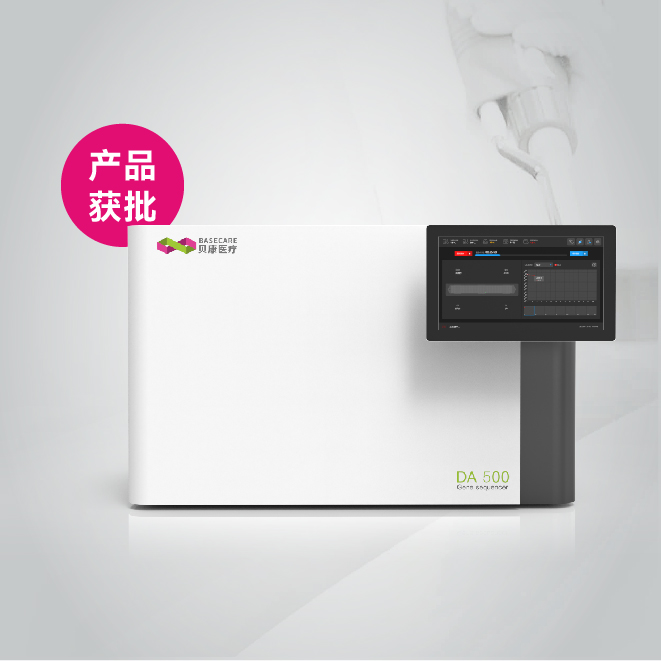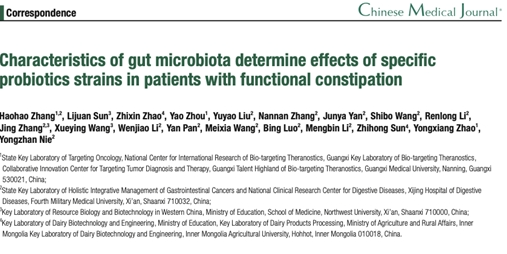Cell culture is filled with variables that can make it difficult to determine the cause of problems. Narrowing a problem down to the one material or one critical procedure can be a daunting task. However, problems usually can be identified by carefully examining the symptoms and meticulously retracing each step in the culture process.
Almost every problem encountered in cell culture can be identified as one of the following:
1.The cells are growing poorly or not at all.
2.The cells have an abnormal morphology.
Each of these problems usually can be traced to one of the 4 following causes:
1.The MATERIALS used were inappropriate, compromised or contaminated.
2.The cultures were exposed to the wrong type of ENVIRONMENT.
3.The CELLS were exposed to toxic conditions, contamination or nutritional deficiency.
4.The cell culture TECHNIQUE was not correct for the cell type.
It is important to maintain accurate and complete records of all the materials used and culture work performed so items such as lot numbers and seeding densities can always be referenced.
Materials
Media
The use of an appropriate culture medium is crucial to the optimal health and growth of cells. If in doubt about which medium to use, contact the original supplier of the cell stocks, the American Type Culture Collection (ATCC) catalog or SAFC Biosciences' Technical Services department.
Even the correct media choice can lead to trouble if it has been stored incorrectly or has expired. Always store media as directed, usually refrigerated (2 to 8 °C), and always store liquid media in the dark. Inappropriate temperatures and exposure to light can hasten the breakdown of media components, and in some cases even result in the formation of toxic by-products. Always dispose of expired media or media that appears cloudy or contains precipitate. Do not freeze media as this may cause irreversible precipitation of critical components.
Media incorrectly prepared from dry powder can also be a source of problems. Common mistakes include not letting the powder fully dissolve, incorrect pH adjustment or using water above 30 °C. Sterile filtering should be done with a final 0.2 µm cellulose acetate or other low protein-binding filter. Filters coated with wetting agents should not be used to avoid the inadvertent addition of cytotoxic detergents to the media. Filters made of nylon or glass may remove necessary lipids and fatty acids, while nitrocellulose filters can strip proteins from the medium. Refiltering sterile medium after supplementing with serum or other growth factors also is not recommended. Although there are exceptions, most media contain heat labile components and should not be autoclaved. Serum-free medium should not be filtered through membrane porosities of less than 0.2 µm as this may remove critical components.
To reduce the chances of microbial contamination or cross-contamination of cell lines, use separate media containers for each cell line and do not share the same bottle of material with co-workers. Aseptically dividing material into a separate vessel for each person and for each cell line is good laboratory practice. Never work with more than one cell line at a time.
Supplements
Serum and L-glutamine are the two most common cell culture media supplements. Incorrect handling of serum can lead to the formation of precipitates (see Storing and Thawing Serum) or contamination. Be prepared to see slight growth lags when adapting cultures to a new serum type or even a new lot of serum. Using media that is deficient in L-glutamine is one of the most common mistakes made in cell culture. L-glutamine in liquid form only has an estimated 6 - 8 week half-life at refrigerated temperatures, and levels in media must be replenished periodically to achieve optimum results.
Vessels
Cell culture glassware should always be cleaned with phosphate-free detergents and be thoroughly rinsed, as residual levels of cleaning detergents in vessels can be toxic to cells. Over time, spinner flasks can develop a film of surfactants and cell debris. These vessels should be periodically stripped and recoated with a silicon reagent to reduce shear and friction. Glassware that is used repeatedly also may be a source of endotoxin. Schedule periodic washing treatments in sodium hydroxide (NaOH 1N) (Catalog No. 59223C) or dry oven exposure at 250 °C for 3 hours to depyrogenate glassware.
Environment
Temperature
Temperature fluctuations out of the normal ranges can severely affect cell growth. Mammalian cells should be incubated at 37 ± 1 °C while insect cultures must be kept at 25 ± 2 °C to achieve optimum growth. Exposure to temperatures outside of these ranges can lead to permanent damage to the cells.
pH
Most cells are very sensitive to the pH of their surroundings. Conditions that are too acidic or basic can cause poor cell growth and permanent cell damage. The optimum pH range for most mammalian cells is around pH 7.2 ± 0.2, while insect cells perform best at approximately pH 6.2 ± 0.1. Because the pH of a medium will change as nutrients are taken up by the cells and as the levels of respiratory by-products increase, monitor cultures periodically and perform media changes as necessary.
Carbon Dioxide (CO2)
Mammalian cell culture media typically contain buffering systems that require a CO2 atmosphere. Severe pH shifts can result if adequate CO2 levels are not maintained. 5% CO2 is usually sufficient in most culture systems; however, this level may need to be adjusted to accommodate or enhance the growth of certain cell lines. It is also important to leave the flask caps of these cultures open slightly to allow adequate gas exchange.
Insect cell culture media, as well as a few mammalian media such as L-15 (Leibovitz) Medium, contain buffering systems that are not dependent on CO2. These cultures should be exposed to atmospheric conditions.
As a general rule, media and buffers containing Earle's Balanced Salts require CO2 for optimum performance, while those with Hanks' Balanced Salts are for use under atmospheric conditions.
Humidity
For culture vessels that must have the caps loose for gas exchange, humidity levels are also important. Low humidity can lead to the evaporation of water from the medium resulting in concentrated salt levels and conditions that cause cell lysis. A pan of water placed in the bottom of the incubator usually is sufficient to supply the proper humidity level.
Cells
Toxicity
Cell toxicity, or cytotoxicity, is the inhibition of cell growth or deterioration of cells due to excessive concentrations of a particular agent or ingredient. Abnormal morphology is the main indicator of cytotoxicity and can include one or more of the following: giant cells, multi-nucleated cells, a granular or "bumpy" appearance, vacuoles in the cytoplasm or in the nucleus and/or ragged cell edges.
To identify which material (medium, serum, supplements, flasks, etc.) is causing the cytotoxicity, substitute them one at a time with control reagents, and screen for the signs of toxicity listed above. Serial dilutions of a suspected material can be used to determine the level at which that component becomes cytotoxic to the cultures.
Contamination
Microbial contamination comes in many forms including Gram positive and Gram negative bacteria, mycoplasma, viruses, molds and yeast. Indicators of contamination include turbid culture media, changed growth rates, abnormally high pH, poor attachment, multi-nucleated cells, grainy cellular appearance, vacuolization, inclusion bodies and cell lysis.
One initial method to confirm suspicions of contamination is to transfer fluids from the suspected culture to a "clean" culture, incubate and observe daily for cell deterioration. Specific identification assays are available for determining the general or specific type of contamination present. Positively identifying the contaminant is crucial to determining its source and in planning corrective action.
Contaminated cultures should be autoclaved and discarded immediately to reduce the risk of spreading the contamination to other cultures or other areas of the lab.
Antibiotics such as gentamicin, streptomycin and penicillin often are used in cell culture media to control low levels of contamination. However, some researchers feel that it is wise to avoid using antibiotics altogether. It is better to detect a contamination right away and handle it immediately than to mask it with antibiotics. Antibiotics also can be cytotoxic when used at elevated concentrations, and low serum or serum-free cultures are especially susceptible to this problem.
Nutritional Deficiencies
Because different cell types and cell lines have different nutritional requirements, it is difficult to have one medium system that will satisfy all of your cultures. Unsatisfactory cell performance (poor growth, poor attachment, and/or monolayer sloughing) often occurs if the cell's nutritional requirements are not being met. Other indicators are giant cells, vacuoles and ragged cell edges. Deficiencies can arise from a certain component or components being absent altogether or from levels being exhausted too quickly.
Supplementing medium with additional amino acids (particularly L-glutamine), vitamins, glucose or higher levels of serum and observing the cell's response can help to identify the component(s) not present at sufficient concentrations. Depending on the degree of the deficiency, the cultures may be too thoroughly damaged to completely recover. It is often necessary to start new cultures once this problem has been identified.
Technique
Common Problems Due to Technique
Symptom
Probable Cause
Spotting
• Bubbles in medium have attached and displaced cells
Ringing or "halo" effect
• Not enough medium used
Streaking
• Condensation buildup
Peeling or sloughing
• Overgrowth due to overseeding or prolonged incubation
Aggregation or clumping
• Cells damaged during subculturing or not fully resuspended prior to seeding
Circular banding in roller bottles
• Rollers turning too quickly
Banding on one side of roller bottles
• Rollers turning too slowly
Circular holes
• Excessive foaming
Stringy cells
• Overexposure to trypsin
Rapid pH shift
• Incorrect CO2 level
• Contamination
• Insufficient buffering capacity
Reduced growth rates
• Change in medium or serum
• Low seeding density
• Adaptation response to environment
• Low-level contamination
• Degradation of critical components such as L-glutamine
Poor attachment
• Over-typsinization of cells
• No attachment factors in medium
Trypsinization
The misuse of trypsin can lead to immediate and long-term problems with a set of cultures. Trypsin is a popular detachment factor because it digests the proteins that keep the cell attached to a surface. Prolonged exposure to trypsin can result in too much of the cell being digested, which can cause cell damage or destruction.
A few keys to correctly using trypsin:
Use the correct concentration for the cultures being used. Some cells are easy to detach and others are much more difficult to dissociate from the substrate. Different concentrations of trypsin are available with or without EDTA. EDTA, also called Versene, increases a trypsin solution's effect by taking up calcium and magnesium ions.
Watch the clock. Only leave the trypsin on the cultures as long as is absolutely necessary. Check the monolayer often to see if it is beginning to come off and at that point, a gentle tap against the side of the vessel may help to dislodge the cells. Be aware that forcing cells to detach by harsh mechanical treatment such as smacking the flask can cause the cells to "tear" off the surface and cause permanent damage.
Neutralize the trypsin after the cells have detached by adding serum or gently centrifuging the cells into a pellet and resuspending in fresh media. Because serum contains trypsin inhibitors, it is important to completely remove serum prior to trypsinization. This can be done by first rinsing the monolayer with serum-free medium or a calcium- and magnesium-free balanced salt solution such as Dulbecco's Phosphate Buffered Saline (DPBS) (Catalog No. 59321C).
Control the trypsin by controlling the temperature. Cells that are sensitive to trypsin should be trypsinized at room temperature or refrigerated temperatures, while trypsinizing in a 37 °C incubator can speed up the process for more stubborn cells and reduce the total exposure time.
Seeding
Using an inappropriate seeding density can lead to everything from overgrowth and cell sloughing to sparse cultures that may never become fully confluent. The correct density is dependent on the cell type, the medium and amount of serum used, the size of the vessel and when the cultures are to be used or subcultured again.
If you are unsure about how many cells to add to each vessel, try several different concentrations and determine which grows to the appropriate cell density in the time period that is applicable for your infection, assay, or cell stocks. Remember that high cell densities will use nutrients quickly and may require additional supplementation to avoid deficiencies.
Adapting From Serum to Serum-Free
Adapting cells to serum-free conditions can be a smooth transition; however, if it is done incorrectly, many problems can arise. This transition should typically be done over several passages to gradually select cells that can grow under serum-free conditions.
Other important factors to consider:
Use actively growing cells that are in their logarithmic phase of growth. Use cells that are 80 - 90% viable.
Keep exposure to trypsin at a minimum. Cells in the absence of serum are very susceptible to trypsin, so use cold trypsinization procedures or dilute trypsin with calcium- and magnesium-free DPBS.
Handle the cells gently. Do not centrifuge at high speeds or roughly resuspend the cells.
Use a serum-free media that is designed for your type of application.
Refeeding and subculturing the cells at more frequent intervals than used with serum-containing conditions may be necessary.







